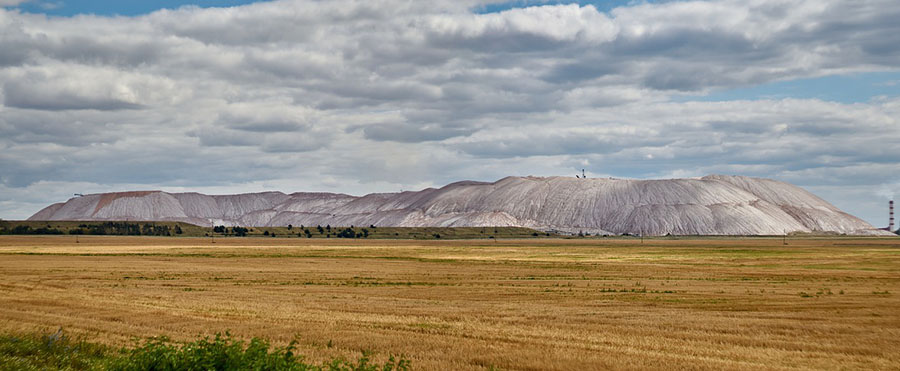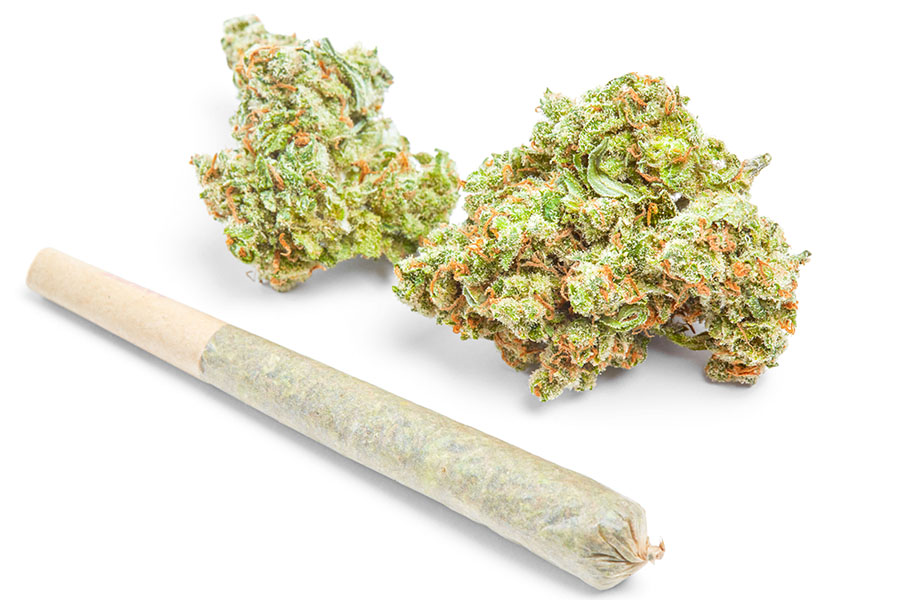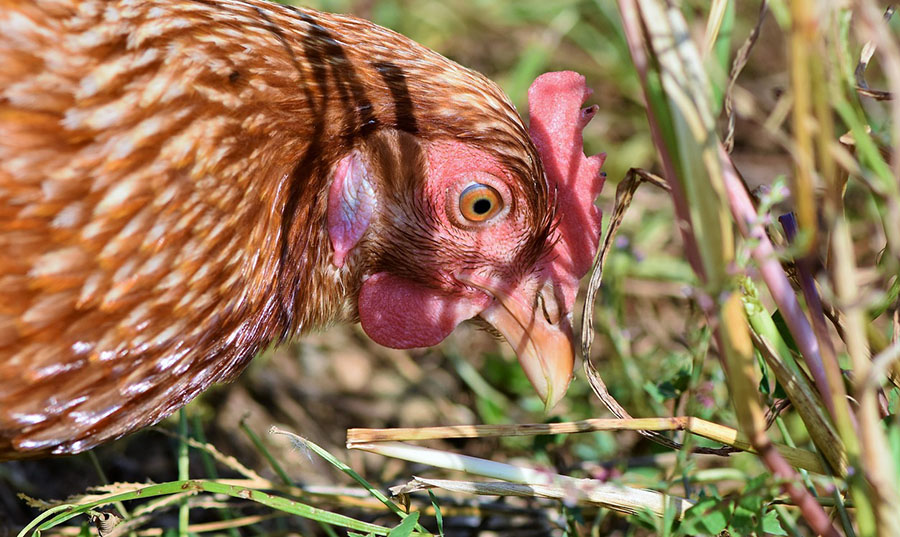TICKERS: AGU, BHP; BHPLF, CF, UAN, IPI, POT, MOS
Charles Neivert: Fertilizer Companies with Value
Interview
Source: George Mack of The Energy Report (8/30/11)
 The recent tumultuous downturn in stocks has created deeper values and new opportunity in the agricultural space. Dahlman Rose & Co. Managing Director Charles Neivert is a near-term bull on fertilizer companies, but the window could close and diminish prospects in the not too distant future. In this exclusive interview with The Energy Report, Charles talks about the complex dynamics that affect the farming and fertilizer industries, and reveals his best pick for a core holding.
The recent tumultuous downturn in stocks has created deeper values and new opportunity in the agricultural space. Dahlman Rose & Co. Managing Director Charles Neivert is a near-term bull on fertilizer companies, but the window could close and diminish prospects in the not too distant future. In this exclusive interview with The Energy Report, Charles talks about the complex dynamics that affect the farming and fertilizer industries, and reveals his best pick for a core holding.
Charles Neivert: I think that as a group this is probably more of a signal of a very strong value for investors over the next three to six months—possibly longer than that depending on the company. We don't see a great change in the agricultural landscape due to the changing economy. It is certainly part of the things going on, but it may have less bearing on the fertilizer names than some other material spaces. That's simply because food is involved and the grain crop out there that may have been damaged in some ways—though possibly not quite as definitive as we might see in other products. As a result, we think there is a lot of value in the fertilizers.
TER: The key difference is that it's food?
CN: Yes. The demand for food is less elastic. Certain amounts of food are needed to keep going and global inventory is limited. This year, a number of grain crops were not exceptionally large. As a result, we don't see a big rebuilding of inventories. The potential is that the price of some of these grains could continue to go up if the harvest does not come up. So, you could see things going up even though the economy is backing off simply because supply is being cut away.
TER: It sounds like you are near-term bullish on some fertilizer names, but that you have longer-term fundamental concerns.
CN: Yes, that is the case. Company prospects really depend on which nutrient is involved during which timeframe. The near-term is very good, I think, for any nutrient given the food and grain situation. However, as you mentioned, fundamentals for some of these products could potentially deteriorate over time while others are likely to be stronger for a little bit longer.
Again, given the nature of the agriculture business, it is really difficult to have a very long-term outlook within the context of a potentially extremely volatile production range, meaning grains. That is because the grains can go anywhere from very, very large harvest years to rather challenged times without any real rhyme or reason. There are no traditional business cycles. The agricultural cycles are all based on weather. If weather is extremely cooperative across a broad range of geographies, you could have an enormously large crop at a time when you don't really want an enormously large crop. You may already have inventories, but there is not much you can do about it.
You might also get a small crop on top of small inventories, or something in-between. You don't have the same control, particularly on the supply side, as you do with a manufacturing operation that can back off production when inventories are long. For the most part, the rules that governments have put into place to enforce land set-asides to help control production, have largely been abandoned. Those policies are no longer used, particularly in the U.S. and even in some other areas. So, you can get large or small crops completely opposite of what you might want or need at that time.
TER: Let me just flip here to the macro-economy for a moment. In a detailed statement following a meeting of the Federal Open Market Committee on August 9, the Fed signaled a prolonged period of slow growth and, in an extraordinary comment, said that interest rates are expected to remain low until mid-2013. How does this affect the agricultural universe?
CN: Well, those rates are pretty much focused on the United States. So, I don't think it really has that much of an impact on the Ag space. In fact, it may have none. Low interest rates, to the extent that they affect the dollar could present some potential challenges because the dollar is weak or because the dollar is strong. That does have a lot to do with corn or soybean costs to potential importers of U.S. products versus some competitors. But, it will have nothing or little to do with what the farmer is going to plant in any given year.
TER: Charles, what are your institutional investor clients telling you now during this selloff? Are they holding off on buying stocks for fear of needing cash for redemptions at this point?
CN: Each portfolio manager may take a different tack, so really this one is a little hard to answer. My guess is that now people are moving and seem to like the Ag space for the time being. We are seeing good activity. A lot of it is to the buy side where activity levels are good.
TER: Can a case be made that some of these plant nutrient producers are defensive stocks?
CN: In the current environment, you can make that argument. They are not typically defensive in the way you think of a food stock in a recession. In a recession, these guys get hit. When grain production is being challenged, they become defensive opportunities.
TER: Potash is traded in a negotiated market, not a globally efficient and tight market. But we have seen some transactions of $490/ton in India. Could this represent an upward trend?
CN: Well, the price of this product has been coming up for over a year now as demand has come back from the trough of 2009. I won't say it's impinging on capacity, but it starts to be a snug market because we have run through a fair amount of inventory over the last year to a year-and-a-half. That is what ultimately justifies the fertilizer price. For the sake of argument, if this year's crop turned out to be extremely large and we rebuilt inventories substantially, fertilizer pricing would have a very tough time going up from here. By the same token, if the crop comes in short, and the way it's looking, it would increase the price of grains and therefore be a bit supportive of a price increase in potash. What we found in 2008 was that crop price is a very important determinant in what the fertilizer price can ultimately do.
TER: Are you currently bullish on potash as a commodity?
CN: No. Near term I like all the names and products, but on a longer-term basis, I'm not as bullish. I see an awful lot of capacity on the horizon. Some has begun to come up and more is coming over the next few years. It will be a pretty steady stream from a very wide variety of potential producers and some new entrants.
TER: At what price-per-ton would you be bullish on potash equities generally?
CN: I don't look at the price of the product as a sign at all. I look at the price and prospect for the grains and consider what needs to happen from that point. So, when grains are at low prices and the crop is looking strong, I'm not going to be bullish.
TER: Is the extraordinary heat wave in the U.S. affecting crops?
CN: It's definitely affecting crops. The timing of the heat wave is also an issue. If you get periodic rain, it reduces that impact. But, there are times where heat can be extremely damaging and other times when it's less damaging. If heat hits at certain points of the growth cycle, plants can be far more damaged than at other stages of their growth. The heat that came through the Midwest earlier in the year hit around a time when certain plants were going through a key stage maturation, and that can be a problem.
TER: Is there a play for investors on drought-resistant crops?
CN: Seeds haven't yet gotten there. There is no seed out with the label of drought-tolerant. It's hard to say resistant. It's really a matter of degrees. If you get no water, nothing will help you. But, if you get smaller amounts than normal, some seeds under development will still produce near- or full-yields under less-than-ideal conditions, but they are not in the market yet. They are within a few years, so the claim goes, and we will see when they make it. All the major seed players are working on that particular trait. You can get into the companies that would provide that pipeline by looking at the typical seed names of the world—du Pont de Nemours & Company (NYSE:DD) and Monsanto Company (NYSE:MON).
TER: Low equity prices have left a lot of companies with cash on their balance sheets. What does this bode for M&A activity?
CN: It's a tough call. It depends on the product because some of the markets may be so consolidated already that it will be difficult to get anything by the antitrust people. Cheap prices may or may not allow for acquisition because people will look at the price from six weeks ago for comparison. A perfect example is what PotashCorp (TSX:POT; NYSE:POT) went through when BHP Billiton Ltd. (NYSE:BHP; OTCPK:BHPLF) took a run at them. The stock was down in the high '80s to low '90s for a long time. BHP was thinking it could get the company for $130, but just before the offer, PotashCorp's share price went up to $106 because the wheat market in Russia started to give way. Russia was experiencing a serious drought. The prices started to move up, and even though the $130 offer was actually still a pretty substantial premium, it was not accepted. Not only was it not accepted by the company, but, as conditions in the grain marketplace worsened with stress from the U.S. corn crop, that price got even higher. So, it easily surpassed the offer number. Either people were expecting a much higher bid, or something is going on that makes the stock just worth more—like getting another bid. When the BHP bid was pulled, the stock didn't drop.
TER: What are you telling your clients right now Charles? Where are the value and the growth stories?
CN: The name we like the most in the group is CF Industries Holdings Inc. (NYSE:CF) because we see the pressure on the corn crop in particular leading to a very positive, constructive situation for corn into 2012. The biggest beneficiary of a corn crop that needs to have a very large planting is more likely to be a name that is heavy in nitrogen, as opposed to one heavy in potash and phosphate.
We think there is going to be a fairly significant increase in corn acres planted next year, and if you need acres in corn, the U.S. doesn't have a lot of new, unplanted acres to go after and would have to probably use acres currently in another crop. Often that tradeoff is in soybeans, which would result in an increase in the application of nitrogen.
TER: Even in this downturn, CF Industries is still up 82% over the past 12 months and it's flat over the past month. So, it's held up pretty well under this pressure.
CN: CF Industries is our only straight-out buy. We've been recommending this stock for a long time. Even when I was less constructive on the industry, this was the name we liked the best.
TER: Even though CF Industries is your only straight out buy-rated stock, you still recommend that money managers create a basket of these stocks, do you not?
CN: Right.
TER: And, what would that basket include?
CN: We are sort of constructive on all the fertilizer names, at least through the fall application season and possibly a bit beyond. CF is only in nitrogen with some phosphate exposure and no potash exposure. So, we would tell people to get some potash exposure, but pick your name carefully. We lean toward PotashCorp as a name, but you have to look at it at that moment in time and see how the company is performing against The Mosaic Company (NYSE:MOS) or Intrepid Potash Inc. (NYSE:IPI). It's really a close call based on a lot of different metrics. That is why we recommend a basket within the group to your preferred weighting. You have to own some of everything, but include some of all of the nutrients. You could cover it all with two or three stocks in the basket.
We have upgraded the entire industry to an attractive level, and in a strong agricultural situation, you don't want to be left completely unexposed to one particular nutrient because they will all move well and you want to catch some of that. It's always hard to tell which one will be the best of the group.
TER: These companies are all mid- and large-cap. Are there any small- or smaller caps under a billion dollars where investors might be able to get a little more leverage?
CN: The only one that I deal with that gets down close to that range is CVR Partners LP (NYSE:UAN). It is a pure play on the nitrogen side structures as an MLP (Master Limited Partnership). It features a good payout, but tends to mute the share price a bit.
TER: Want to mention any other phosphate, potash or nitrogen companies?
CN: The only company I haven't mentioned in the universe is Agrium Inc. (NYSE:AGU). I hesitate to use the word defensive play, but it has a big retail operation that it uses very effectively to move an awful lot of product. It does very nicely in that business. It is also spread across all the nutrients. It has nitrogen, potash and phosphate exposure. It also happens to be based-in and sell a lot of product in Canada, which means that it is a bit isolated from the rest of the market. That actually gives the company a pricing advantage because the market up there is a bit higher-priced. Its big retail exposure is sometimes a little bit of a turnoff if what you are trying to do is play the fertilizer space in a pure way. It's a good company and well run. But, people tend to look at it and say it's not exactly what they are after.
TER: Charles, thank you very much for your time today.
CN: Thank you.
In May 2009, Charles Neivert joined investment bank Dahlman Rose & Company LLC as managing director to head the firm's new Agriculture and Chemicals Research division. Prior to Dahlman, Charles was an executive director at Morgan Stanley where he re-launched the firm's commodity, specialty and fertilizer chemical equity research practice. He was also co-founder and president of New Vernon Associates, an equity research boutique specializing in global chemicals, which was awarded Institutional Investor’s "Best of the Boutiques and Regionals—Commodity Chemicals" honor for nine consecutive years. At New Vernon, Charles conducted all fundamental industry research on a global level, including analysis and forecasting of 50 distinct chemicals. He earned his Bachelor of Arts degrees in chemistry and economics from the University of Pennsylvania.
Want to read more exclusive Energy Report interviews like this? Sign up for our free e-newsletter, and you'll learn when new articles have been published. To see a list of recent interviews with industry analysts and commentators, visit our Exclusive Interviews page.
DISCLOSURE:
1) George Mack of The Energy Report conducted this interview. He personally and/or his family own shares of the following companies mentioned in this interview: None.
2) The following companies mentioned in the interview are sponsors of The Energy Report: None.
3) Charles Neivert: I personally and/or my family own shares of the following companies mentioned in this interview: None. I personally and/or my family am paid by the following companies mentioned in this interview: None.


























































